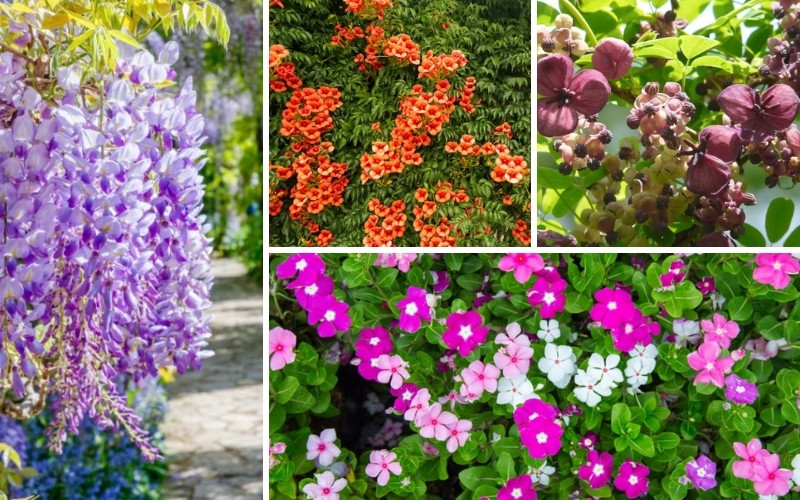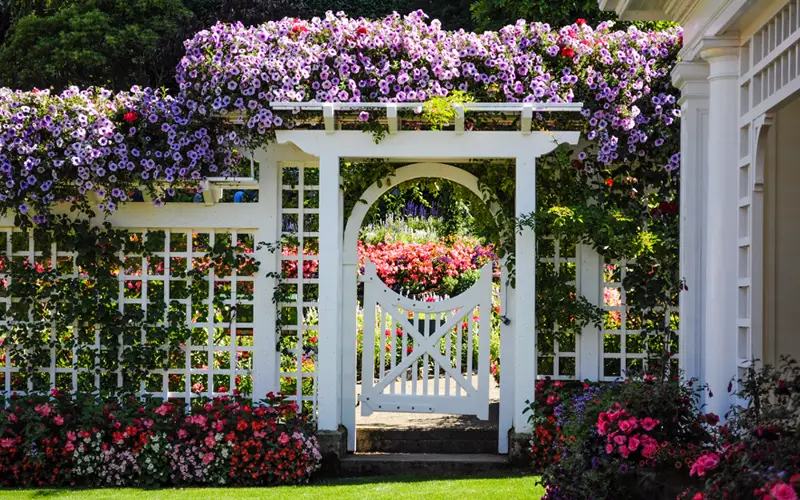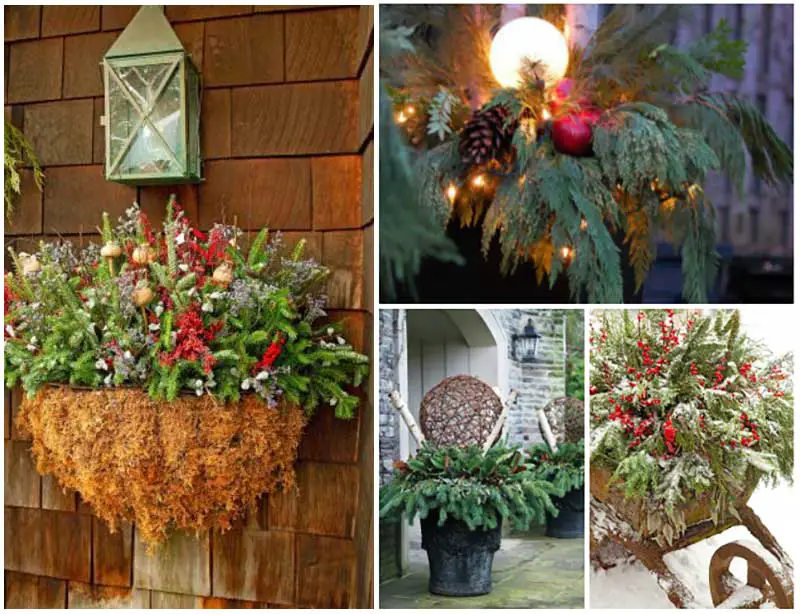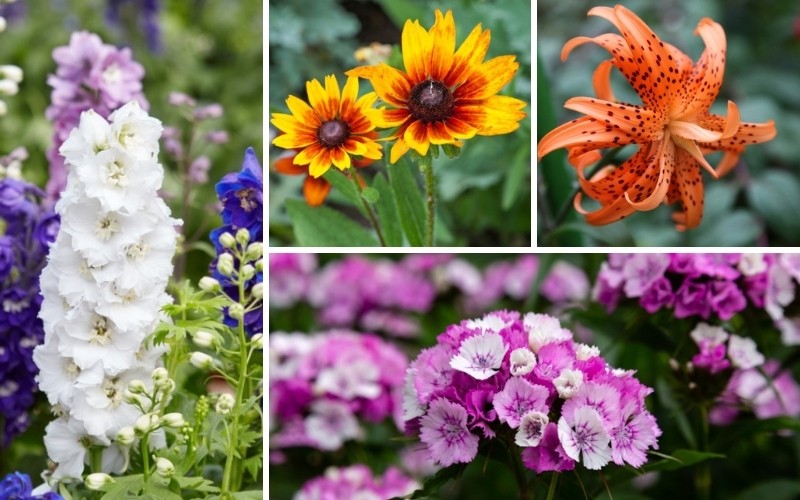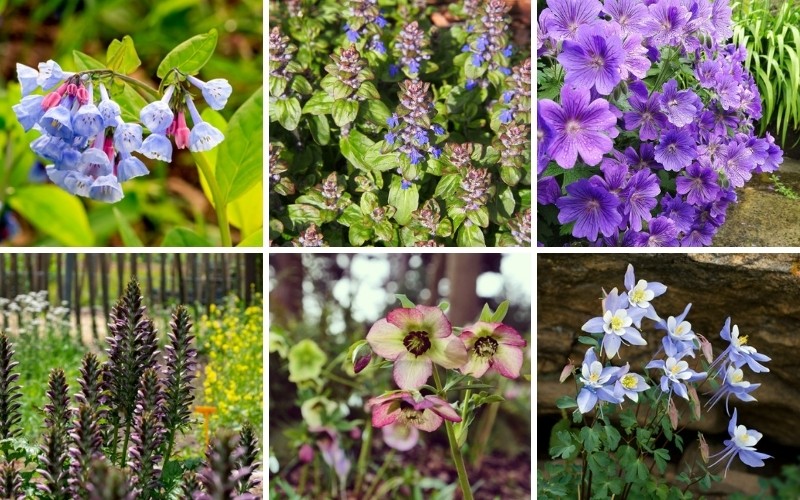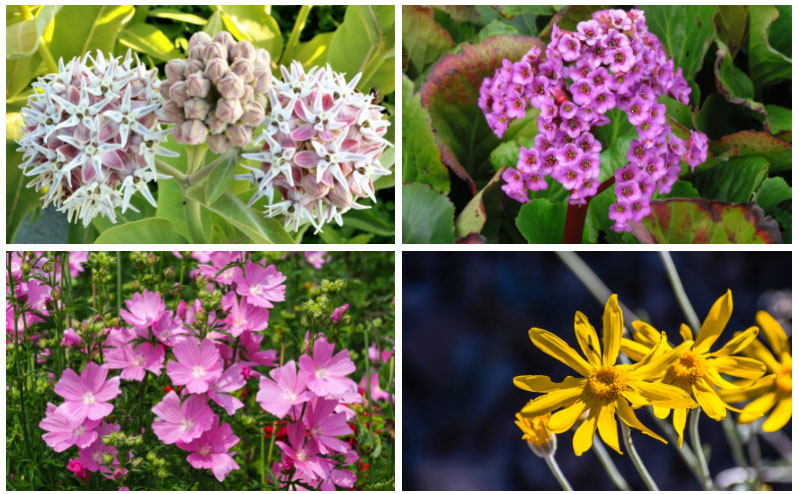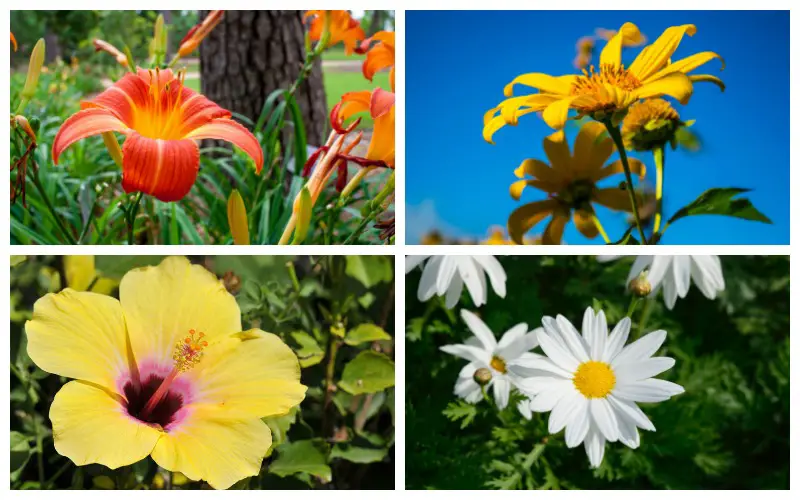
I like to fill my gardens with perennials so that they come back the next year. My garden used to be surrounded by trees, but we moved this past year, so now my garden is full of sun. This means that a lot of the plants that I used to keep in my garden will be unhappy, so I decided to place them in areas with partial shade.
This leaves a large portion of my garden for perennials that love the sun. I never really had a sunny garden, so I did some research to find some of the best perennials to plant. There are a number of options to select from, and with the right selection, you can have a colorful pallet of flowers growing from spring until the first frost every year.
Full sun perennials need at least six to eight hours of direct sunlight a day. In most situations, they should be watered at night after the sun goes down or in the early morning before the sun rises.
Finding the perfect perennials for the sunny areas of your garden takes time, so I created this guide to help you get started. I have included 10 of the perennials that are now located in my garden in this guide; let’s take a look at what they are and some tips for growing each one.
1. Mountain Marigold
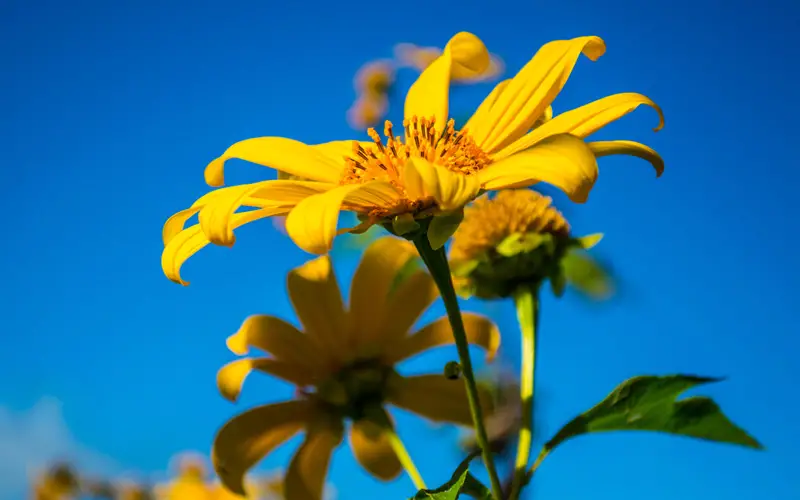
These marigolds are perfect for a sunny location in your garden. They require a bit of love and attention when they are first planted; in fact, during their first season in the ground, they will need a lot of water. Each year they will grow to be denser, especially if you cut the flowers back at the end of their growing season.
The bright yellow and orange daisy-type flowers smell sweet, which attracts bees and beautiful butterflies to your garden as well.
2. Daylily
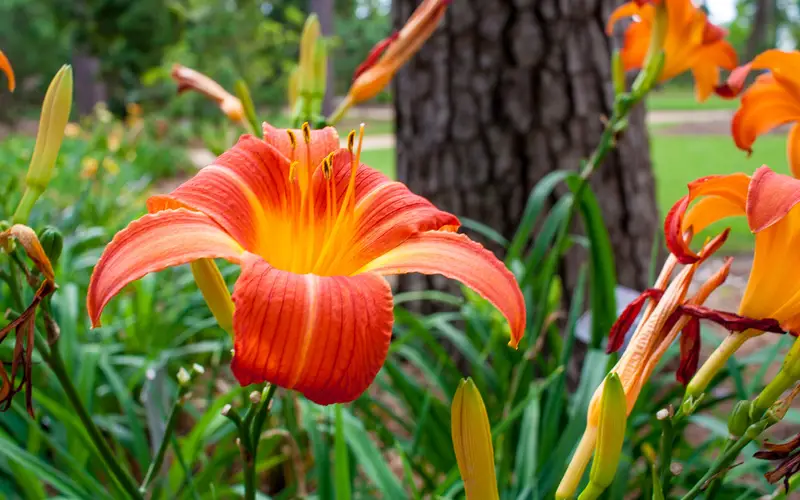
Daylilies are perfect for a full sun garden; in fact, they actually thrive and more blooms open when they are planted in locations that are hot and humid. The blooms of this plant only last for a day, but it produces flowers the entire season, so you will see plenty of color in your garden.
There are a number of different varieties of daylilies that you can choose from, but my favorite is the Ruby Spider. The red petals and the yellow throat of the flower add a delightful contrast to the green leaves.
3. Shasta Daisy
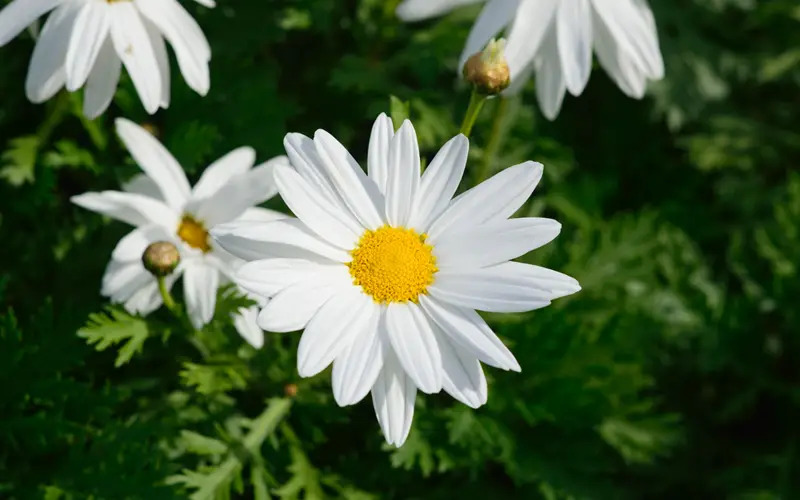
If you like daisies, then you will want to dedicate some garden space to growing these lovely white flowers. These plants don’t even need to be watered during the summer months unless your garden gets less than one inch of rain a week.
When planted in well-drained soil, the full sun loving flowers tend to grow in clumps that are about two feet wide. Every three to four years, they will need to be separated so that they do not become too large for your garden.
4. Black-Eyed Susan
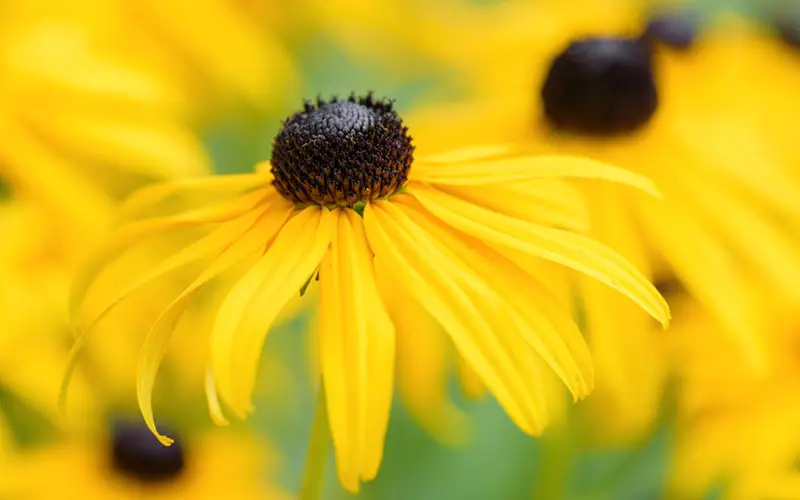
These black and yellow perennials are able to handle full sun, excessive heat, and dry soil amazingly. Even with very little water, these hardy plants can grow to 20 feet.
They last from the first notes of spring until the first frosts of winter. When the blooms begin to die, make sure that you take the time to pinch them off and you will get well more than twice the blooms back within a few days.
5. Red Hot Poker

These exotic looking plants are a perfect option for full sun. They grow to be about five feet tall, so when you first plant them in the ground, make sure that you plant them far enough apart so that they have adequate space to grow.
They should be planted in early spring or fall for the best growth period. Make sure that you use well-drained soil; since they are drought resistant plants, they do not like to have their roots wet.
6. Coreopsis
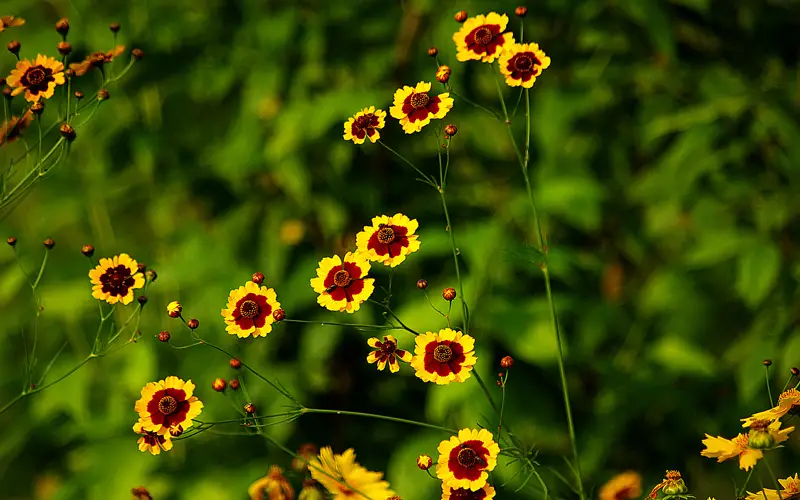
The coreopsis is the state wildflower of the state of Florida, and with all of the heat and humidity in the state, you can be sure that it will be able to handle full sun in your garden. It seems like the flowers actually thrive in a lot of sun.
There are 33 different species of this plant; ranging in color from red and pink to white and yellow. Most of the variations have a dark center that makes them stand out in your garden.
7. Coneflowers
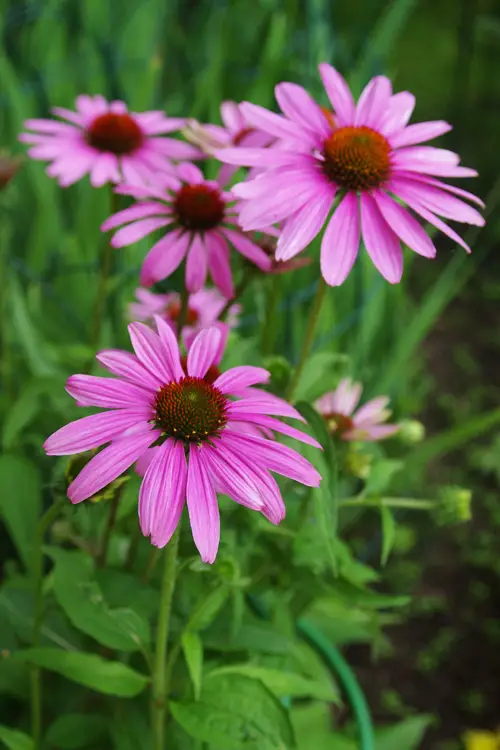
Coneflowers are a mainstay for many gardens that are located in the sun. They take the heat and dry soil like a champ, and they are even drought resistant, so when the heat and humidity of the summer hits, you don’t have to worry about their blooms dying.
Purple is the most common color for the blooms, but they can also be yellow, orange, or white. If the plants begin to flop, you will need to cut them down to the soil when they finish blooming so that they thrive next year.
8. Butterfly Weed
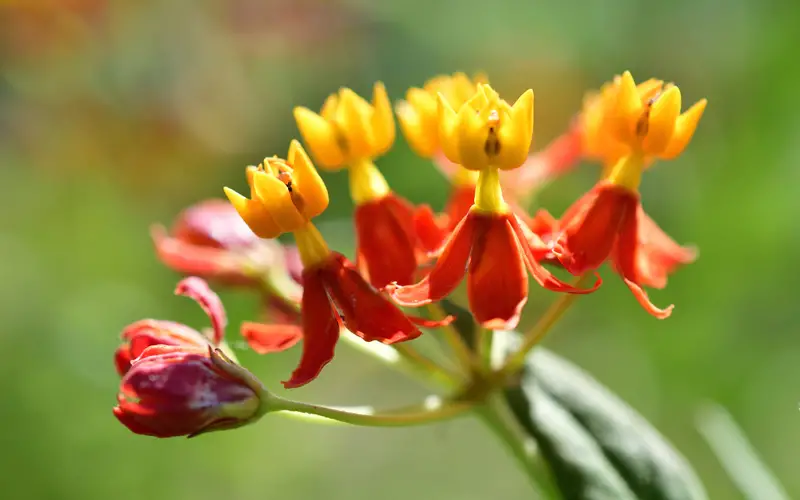
These plants have bright orange blooms that attract butterflies throughout the summer. They tend to grow between one and three feet tall, but if you start these plants from seeds, they may not bloom for two to three years.
Once the plants are established, they like dry soil, so do not water them unless your garden does not get an inch of rainfall each week. In fact, they will thrive in dry soil that is slightly acidic in nature.
9. Hardy Hibiscus
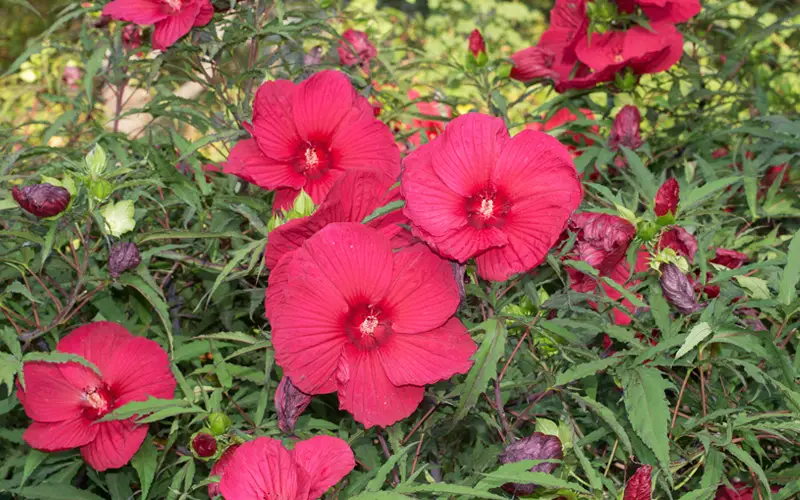
Hardy hibiscus plants thrive the most during the hot heat of summer. During the winter months when it is dormant, the plant will not look like much, but when summer hits, your plant can grow to a height that is between four and six feet tall.
The blooms on this plant will grow to be nearly the size of your head, which is not surprising since it can grow to be much taller than I am. Since they are so large, make sure to leave a few feet between each plant.
10. Yarrow
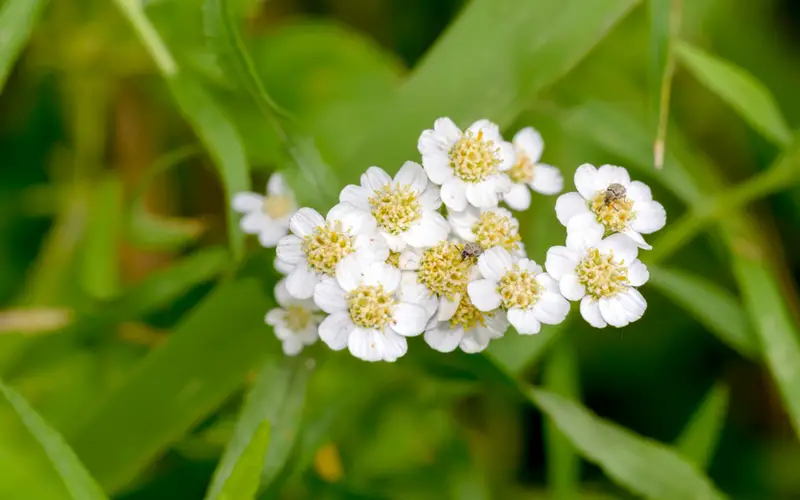
Yarrow is a plant that has bright yellow clusters of blooms on fern-like foliage. There are also some variations that you can select from if you want to add a light pink to your garden.
They are quick to establish in a garden, and they grow to a height of two to four feet in no time at all. They thrive in heat, which means that they do not like having wet roots. Since they grow to such lengths, they should be divided every few years.

